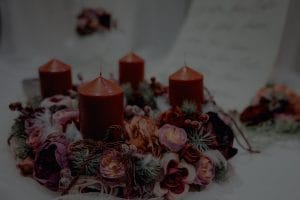**Abstract:**
Explore how the colors in feng shui energy ornaments can transform your space and enhance your well-being. Discover the emotional and psychological impacts of color choices in your environment.
Understanding Feng Shui and Color Psychology
Feng Shui is an ancient Chinese practice that harmonizes individuals with their environment. Central to this practice is the understanding of how color influences energy, or “Chi.” Colors are not just aesthetic choices; they carry specific vibrations that can affect our emotions and behaviors. For instance, vibrant reds can evoke passion and excitement, while calming blues promote tranquility. By integrating feng shui energy ornaments in your space, you can strategically use color to cultivate the desired atmosphere.
The Role of Color in Feng Shui Energy Ornaments
Color serves as a powerful tool in feng shui energy ornaments. Each hue corresponds to different elements and energies, which can impact your life in various ways. For example, green represents growth and renewal, making it ideal for spaces intended for personal development. Similarly, yellow symbolizes warmth and happiness, perfect for social areas. Understanding these associations allows you to select ornaments that align with your intentions, enhancing the overall energy flow in your home.
Choosing the Right Colors for Your Space
When selecting feng shui energy ornaments, consider the specific energy you wish to cultivate in each room. The living room, often a gathering space, benefits from warm colors like oranges and yellows that foster connection and joy. In contrast, bedrooms should embrace softer, cooler tones such as blues and lavenders to encourage relaxation and restful sleep. By thoughtfully incorporating color, you can transform your home into a sanctuary that nurtures your emotional and spiritual well-being.
The Emotional Impact of Color in Feng Shui
Colors influence our emotions profoundly, and feng shui energy ornaments can harness this power. For example, the color red is often linked to increased energy and motivation, making it suitable for workspaces. Conversely, blues and greens promote calmness and focus, ideal for meditation or study areas. By understanding these emotional connections, you can choose ornaments that resonate with your needs, creating a balanced environment that supports your lifestyle.
The Science Behind Color and Energy
Research in color psychology supports the notion that color affects mood and behavior. Studies have shown that certain colors can increase productivity, reduce stress, and even enhance creativity. When you incorporate feng shui energy ornaments with specific colors, you’re not just beautifying your space; you’re actively influencing your mental and emotional states. For instance, incorporating earthy tones can ground your energy, while brighter hues can uplift your spirits.
Practical Tips for Implementing Color in Your Decor
To effectively use color in your feng shui energy ornaments, start by assessing your current space. Identify areas that feel stagnant or uninviting, and consider how color can shift the energy. For example, adding a vibrant red ornament in a dull corner can instantly energize the space. Additionally, consider the balance of colors; too much of one hue can create chaos, while a harmonious blend can promote tranquility. Experiment with different ornaments and placements to find what resonates best with you.
Conclusion: Transform Your Space with Color
Incorporating color into your feng shui energy ornaments can significantly impact your environment and well-being. By understanding the emotional and psychological effects of color, you can create a space that not only looks beautiful but also supports your personal growth and happiness. Whether you’re looking to energize a workspace or create a peaceful retreat, the right colors can transform your home into a nurturing sanctuary. Embrace the power of color in feng shui and watch your life flourish.










